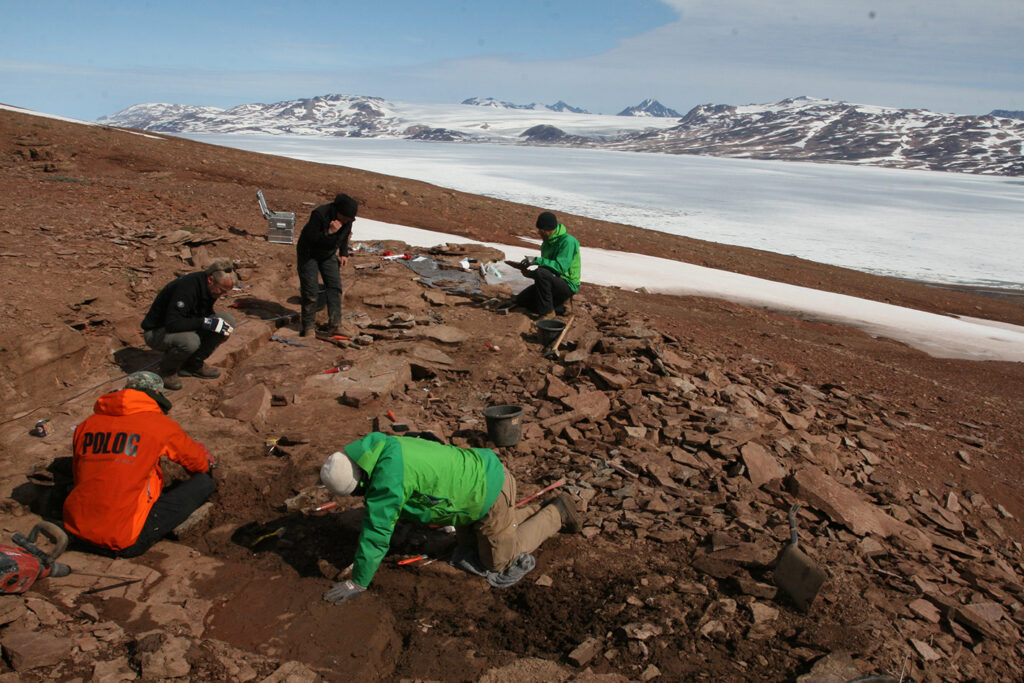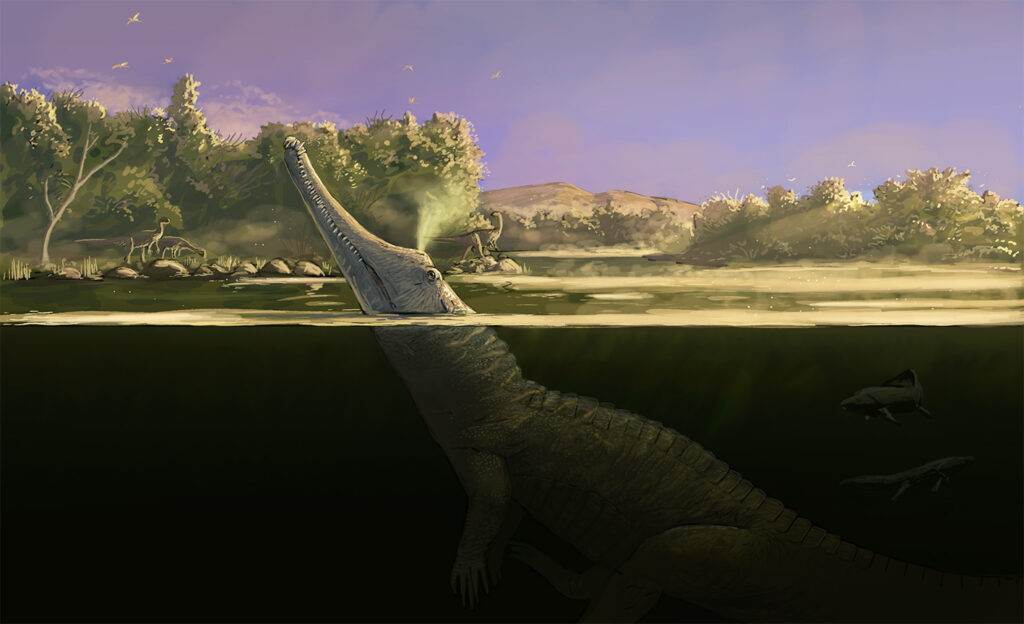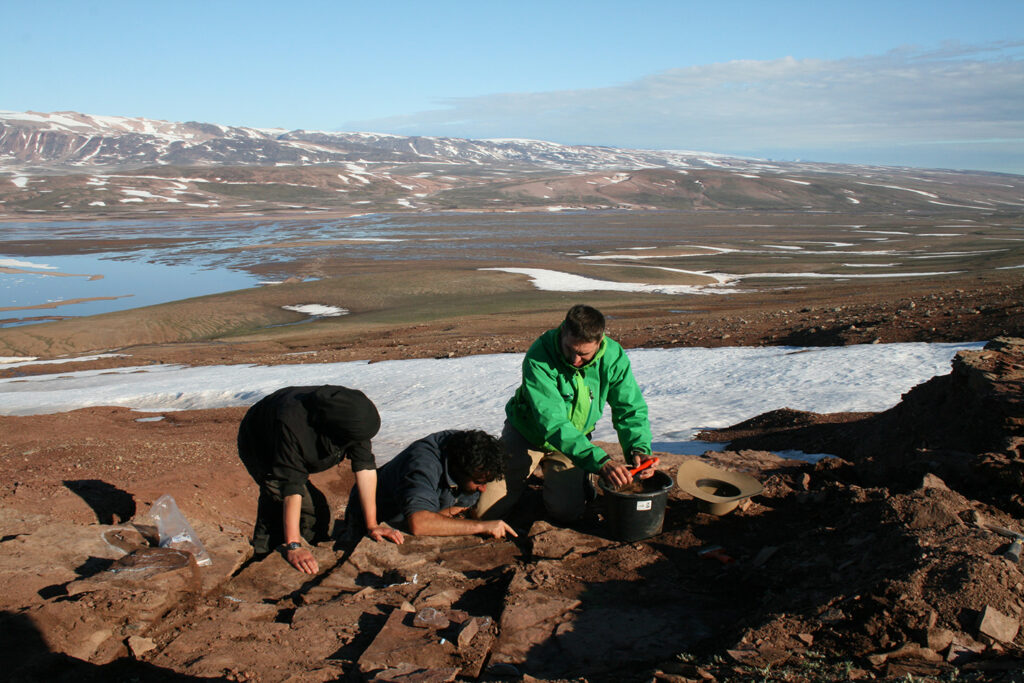Researchers find new species of bizarre crocodile relatives in East Greenland
Paleontologists from Portugal, Denmark and Germany have discovered a new species of phytosaur – a bizarre crocodile-like reptile from the Late Triassic – in more than 215 million-year-old river and lake sediments in Jameson Land, East Greenland. SNSB paleontologist Dr. Oliver Wings was also involved in the discovery and description of the fossil. The researchers recently published their findings in the Journal of Vertebrate Paleontology.
Four specimens of a new phytosaur species were discovered by paleontologists in Jameson Land in East Greenland. Also involved in the excavations at the Triassic fossil site (215 million years old) was Dr. Oliver Wings, director of the Natural History Museum Bamberg, one of five regional museums of the SNSB. The findings surprised even experienced paleontologists. Paleontological expeditions to Jameson Land have been done since the early 20th century, but only during expeditions in 2012 and 2016 the first phytosaur remains were found.
Phytosaurs lived on nearly every continent during the Late Triassic period and became extinct about 204 million years ago. The animals resembled crocodiles and lived like crocodiles, but are only distantly related to them. They have a particular characteristic that differentiates from crocodiles and other reptiles. “In these reptiles, the nostrils are retracted to the back of the skull, near the eyes,” explains Víctor López-Rojas, a doctoral student at NOVA University of Lisbon and first author of the study. The researchers found parts of skulls, as well as bone remains from the trunk and limbs of the new species from Greenland and named the fossil Mystriosuchus alleroq. The remains belong to at least four individuals of juveniles and adults. This also allowed the scientists to study their ontogeny, their biological development. The study involved researchers from NOVA University of Lisbon, Portugal, the University of Copenhagen and Geomuseum Faxe, Denmark, as well as the University of Bonn and the Natural History Museum Bamberg.
The new species from Greenland is closely related to the European phytosaurs known so far. This finding fits with previous studies on the close relationship of many animal groups from East Greenland and Europe at the end of the Triassic such as giant amphibians, fish or early dinosaurs.
Publication
Víctor López-Rojas, Lars B. Clemmensen, Jesper Milàn, Oliver Wings, Nicole Klein & Octávio Mateus (2023) A new phytosaur species (Archosauriformes) from the Upper Triassic of Jameson Land, central East Greenland,Journal of Vertebrate Paleontology,DOI: 10.1080/02724634.2023.2181086
Contact
Dr. Oliver Wings
Naturkundemuseum Bamberg
Tel: 0951 8631 246
E-mail: wings@snsb.de
More Info



Header: Phytosaur-Paleoart – by Victor Carvalho

